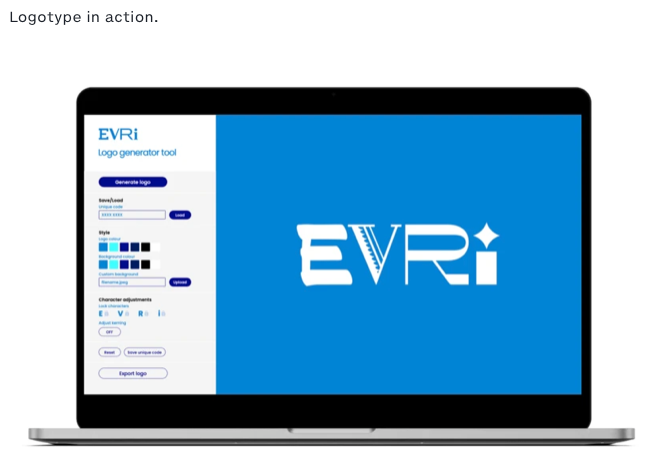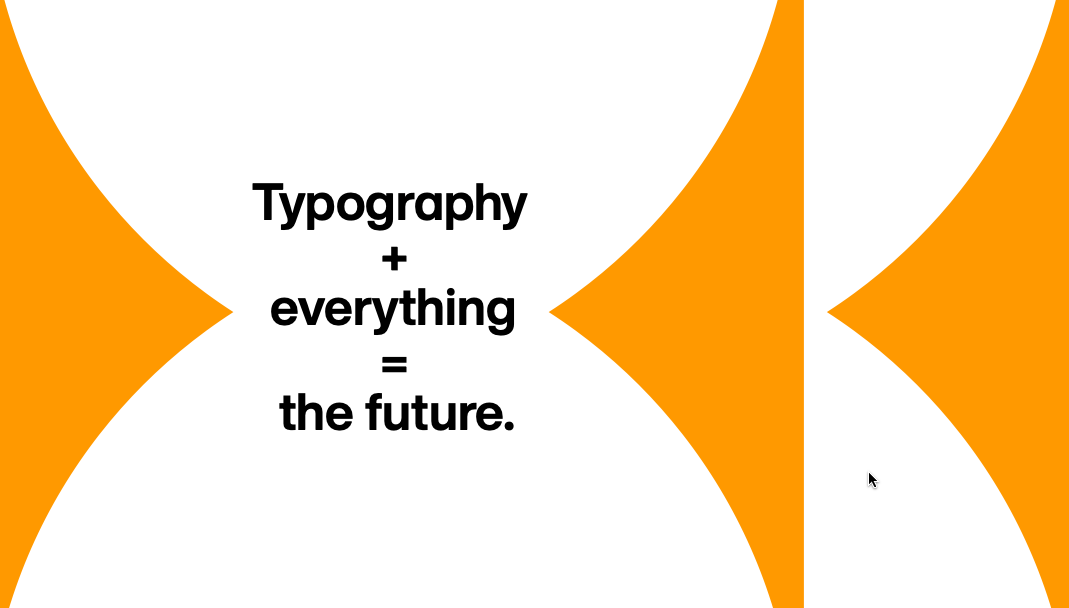Fancy Drop Caps
Fancy Drop Caps. Drop caps, or technically, versals, are larger letters that mark the start of a major text block. They are often larger than the surrounding text and visibly show off the start of a major textual work. Typographers use drop caps, often for fun and visual appeal, to show off their skill and visual intuition. Drop caps herald back to letterpress and scribal tradition, with many of them coming from calligraphy.
The practice of using drop caps dates back to the medieval times when scribes would embellish the first letter of a manuscript to make it stand out and emphasize its importance. In the early days of printing, drop caps were used primarily for their aesthetic value. Printers would carve elaborate woodcut or metal typefaces to create intricate and ornate drop caps that would catch the reader's eye and add visual interest to the page. Drop caps were often used in religious texts, where they were seen as a way to honor the divine word.
Over time, drop caps became more standardized and simpler in design, but they continued to be used as a way to add visual interest and hierarchy to the page. They were commonly used in books, newspapers, and magazines to indicate the beginning of a new section or chapter, or to draw attention to a particularly important paragraph or quote. In the digital age, drop caps have remained popular and are used in a wide range of documents, including books, magazines, newsletters, and websites. While digital drop caps lack the intricate detail and texture of their printed counterparts, they can still be effective in adding visual interest and emphasis.
Adobe has a new program for creating text based images, called Adobe Firefly (beta). The final display below is a sampling of text made into complex images using this new program. It is an exciting program for graphic artists and designers and even typographers looking for eye-catching display.
I have included below some fancy drop caps and how they might be used in a text opening. Enjoy!
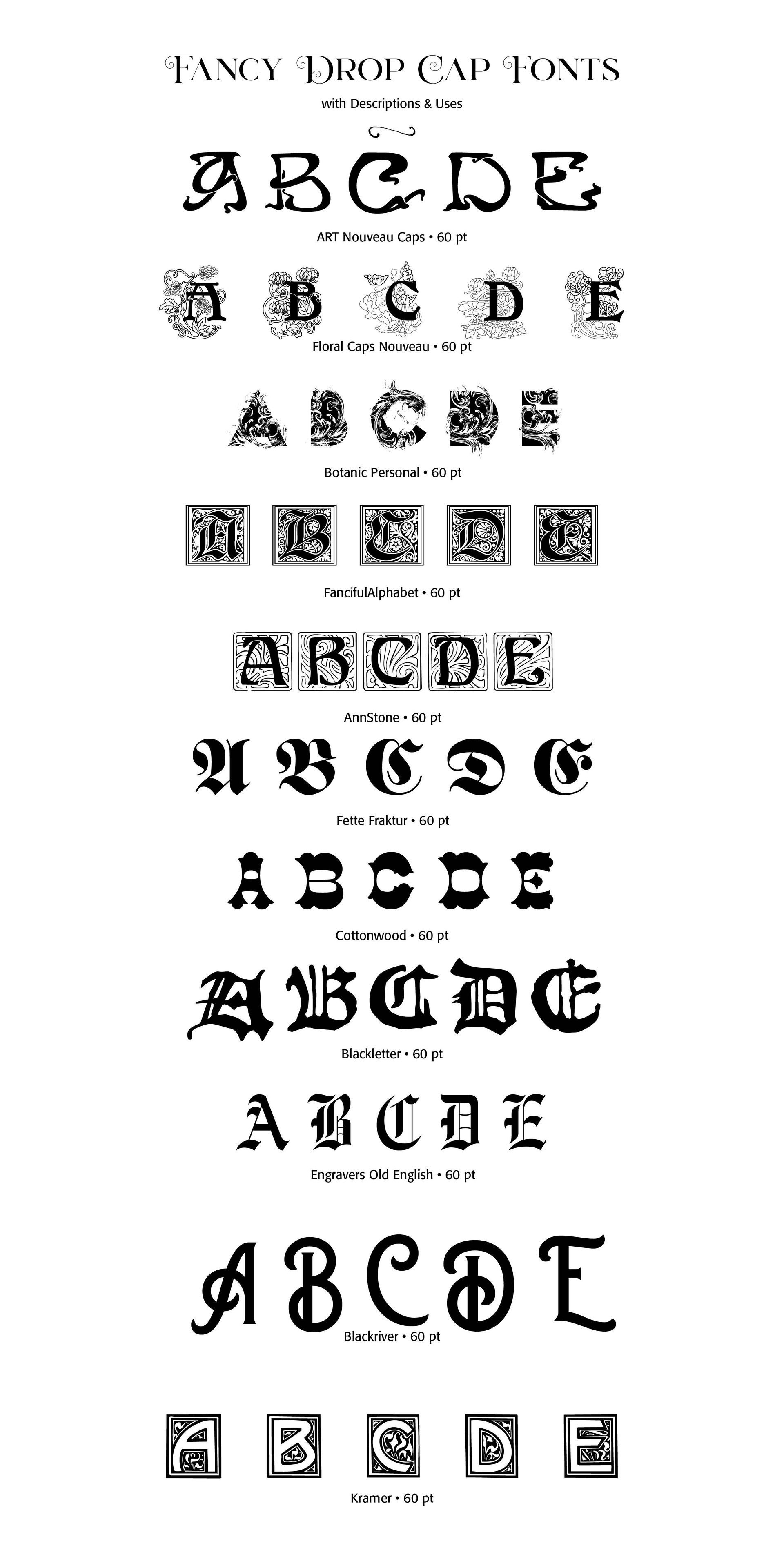
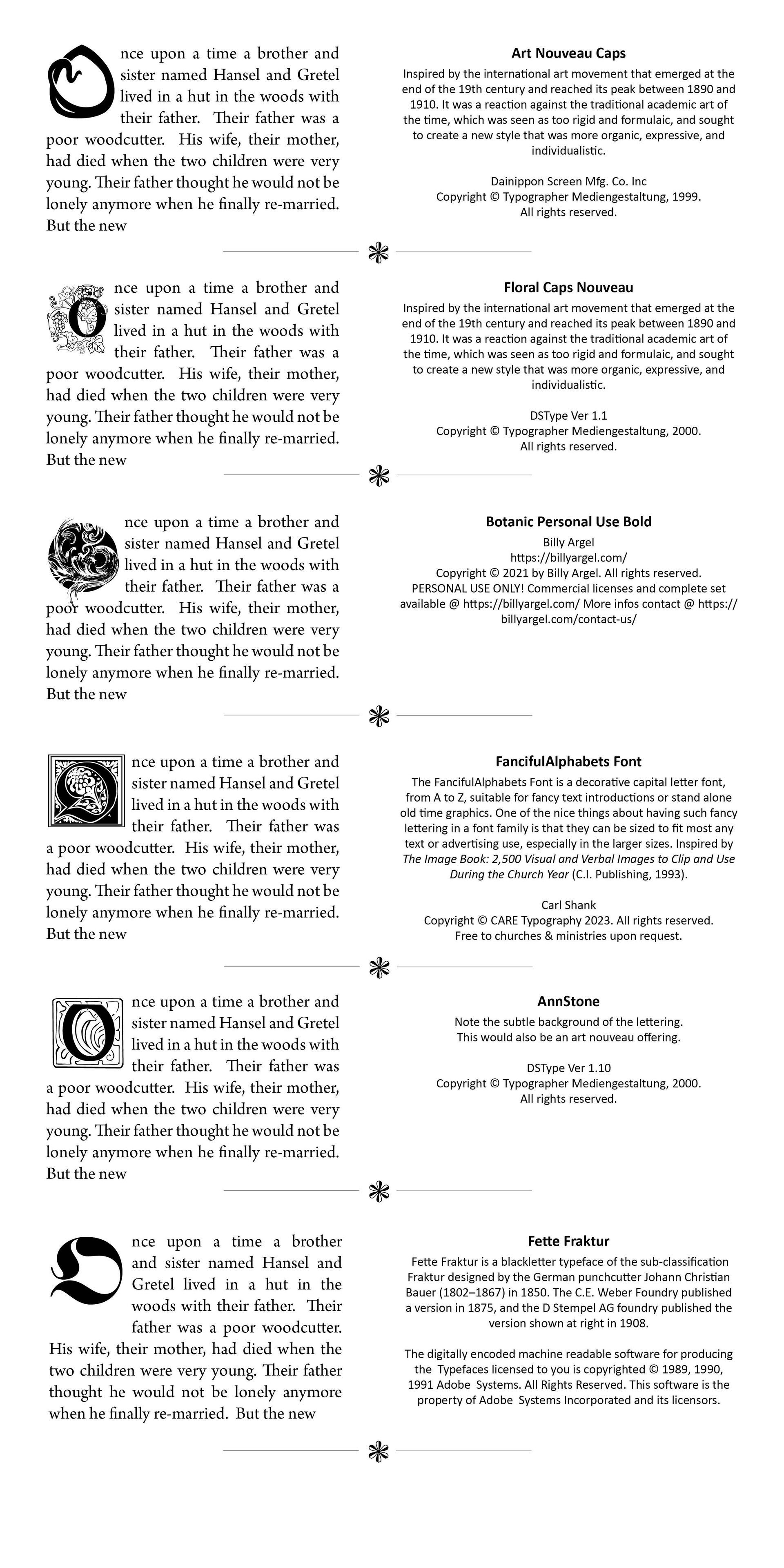
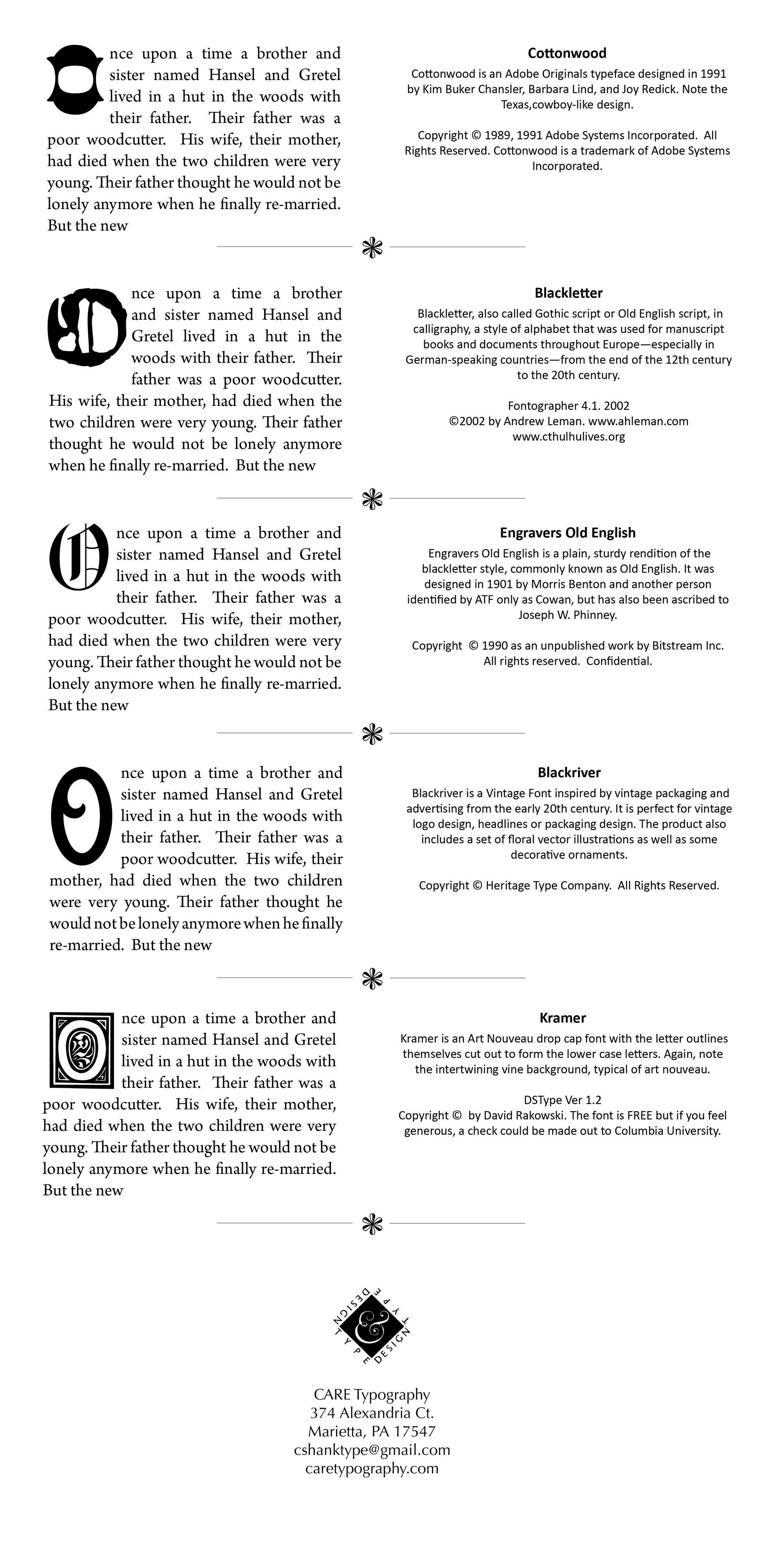
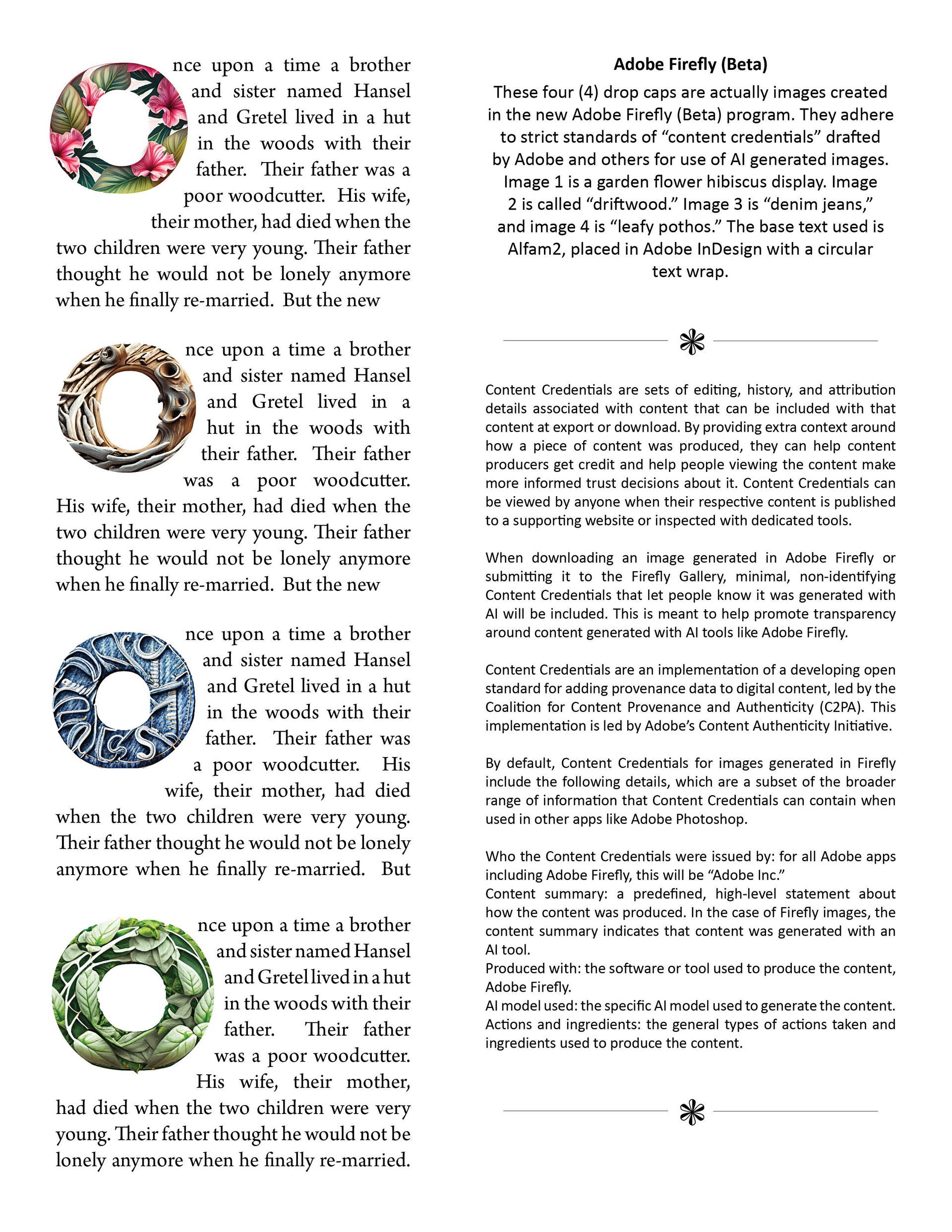
Successful Layout & Design
